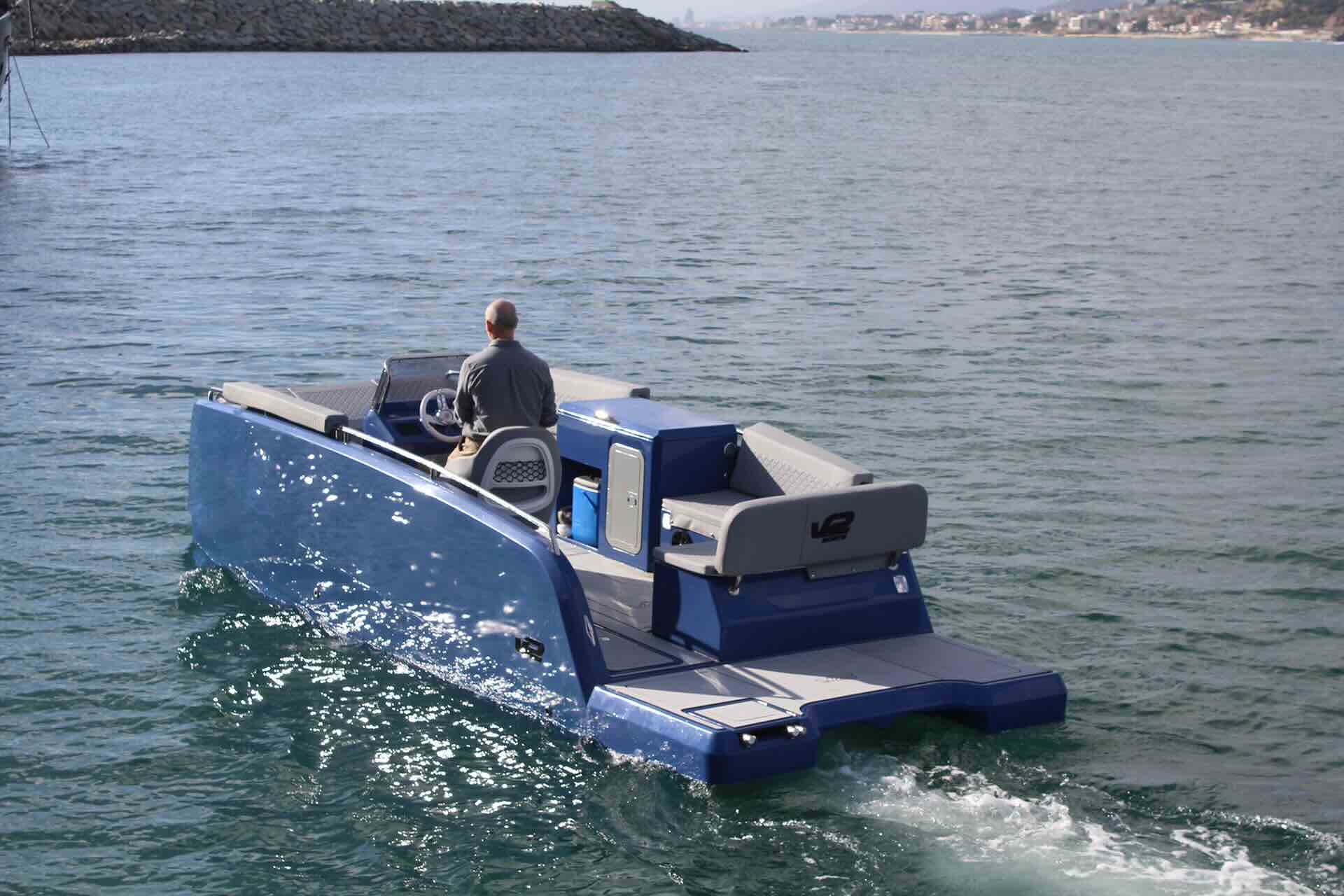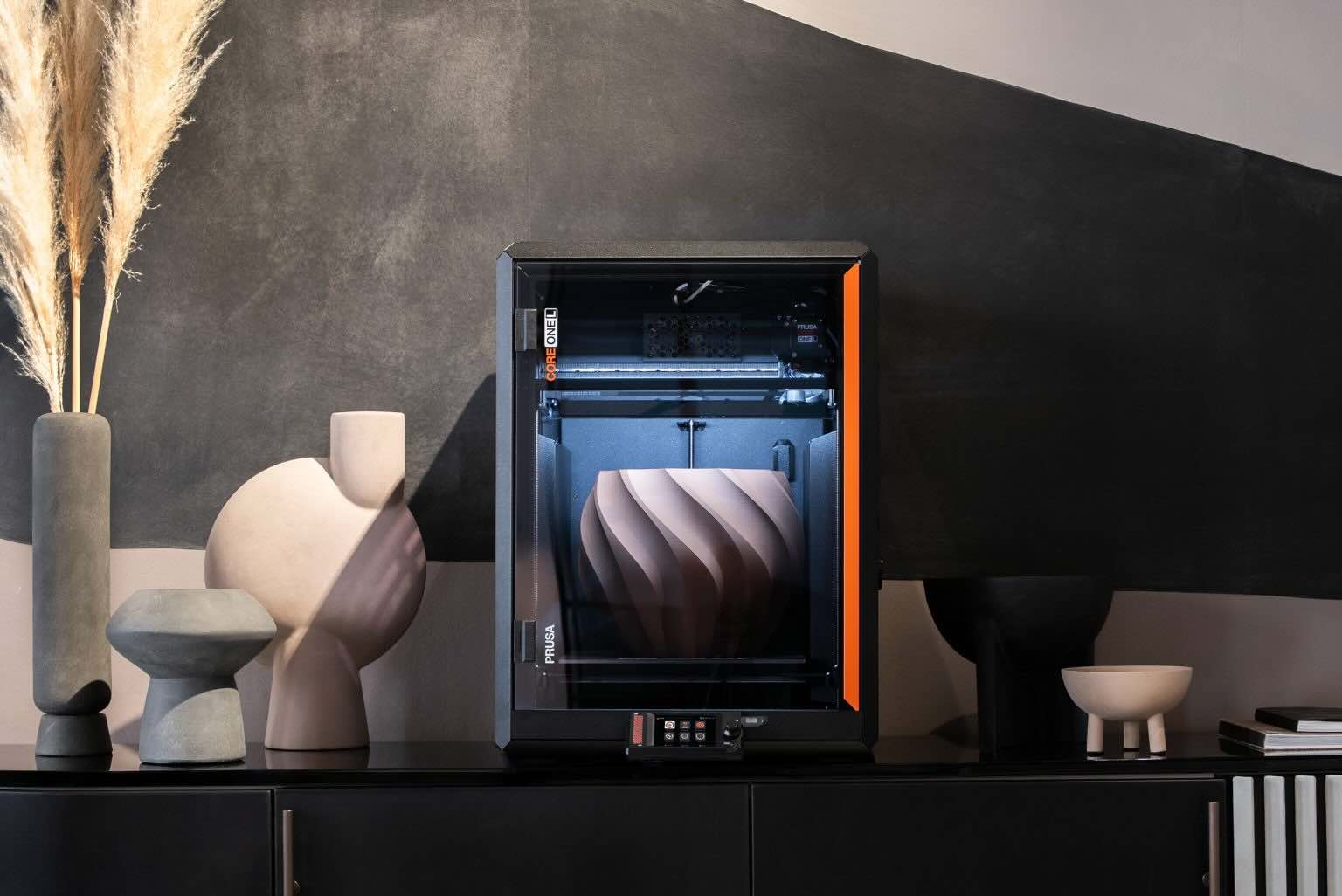Caracol, a leading large format additive manufacturing technology manufacturer, has announced the successful production of the first 3D printed Aerodynamic Grilles for the Pershing GTX116 using its Heron AM platform. The Ferretti Group, a global leader in luxury motor yachts, commissioned these innovative components for its new 35-metre sports yacht that combines elegance, comfort, and the signature Pershing thrill.
The Pershing GTX116 air grilles showcase how Heron AM technology can transform yacht manufacturing by enabling the direct production of complex superstructural parts with intricate geometries. This implementation represents a significant shift from traditional fiberglass lamination methods, delivering substantial improvements in production efficiency, weight reduction, and design flexibility.
Pershing GTX116 Aerodynamic Grilles

The Pershing GTX116 air grilles represent a departure from traditional yacht manufacturing methods. Conventionally, such components are produced through manual fiberglass lamination on multiple moulds—a labour-intensive process requiring highly skilled workers that impacts both production times and costs.
Heron AM technology eliminates the need for master moulds entirely, enabling the direct production of composite components with intricate geometries directly from digital models. This streamlined approach bypasses manual lamination phases, significantly reducing prototyping and production timeframes while allowing for rapid design iterations and optimisations.
For the Pershing GTX116 specifically, the air grilles were manufactured using Caracol’s Heron 300 system equipped with a High Accuracy extruder and a 3 mm nozzle. The components were printed using ASA reinforced with 20% glass fiber, chosen for its excellent durability and resistance to harsh marine environments.
The manufacturing process took 72 hours to complete, producing an air grille measuring 4200 x 400 x 400 mm and weighing 40 kg. The finished components underwent gel coat application to ensure weather resistance and maintain the yacht’s premium aesthetic qualities.
Adoption of Heron AM

The adoption of Heron AM for the Pershing GTX116 has delivered remarkable improvements in manufacturing efficiency and sustainability. Compared to traditional methods, this approach has achieved a 50% reduction in lead time, 60% less material waste, and a 15% decrease in overall component weight.
These improvements align perfectly with the Pershing GTX116’s performance objectives, as the yacht is designed to optimise all onboard weights to achieve exceptional speed and handling characteristics. The lighter yet structurally sound air grilles contribute to the vessel’s overall performance envelope while maintaining the distinctive styling that defines the Pershing brand.
Beyond the immediate performance benefits, the Heron AM manufacturing process offers greater design flexibility, allowing for small-batch or fully customised production that caters to specific project requirements. This adaptability is particularly valuable in the luxury yacht sector, where exclusivity and customisation are highly prized.
The environmental advantages are equally significant, with substantial reductions in material consumption and waste. By producing components that use only the necessary material, Heron AM technology supports more sustainable manufacturing practices within an industry increasingly focused on reducing its environmental impact.
Future Applications in Marine Industry
The successful implementation of additive manufacturing for the Pershing GTX116 air grilles highlights the broader potential of this technology in the marine sector. As a pioneering application, it demonstrates how Heron AM can produce highly complex and tailored components while optimising manufacturing processes and reducing time-to-market.
Caracol’s robotic platform has proven its ability to deliver shortened production times, improved efficiency, and reduced material waste, with positive implications for both manufacturing costs and environmental sustainability. These benefits position Heron AM as a valuable tool for producing lighter, stronger structural components across various marine applications.
The technology opens new perspectives in the design and production of unique, highly customised yacht superstructures that might otherwise be impractical or prohibitively expensive to manufacture through traditional methods. As the marine industry continues to embrace innovation, additive manufacturing solutions like Heron AM are likely to play an increasingly important role in the future of yacht construction.
About Manufactur3D Magazine: Manufactur3D is an online magazine on 3D Printing. Visit our Global News page for more updates on Global 3D Printing News. To stay up-to-date about the latest happenings in the 3D printing world, like us on Facebook or follow us on LinkedIn and Twitter. Follow us on Google News.











